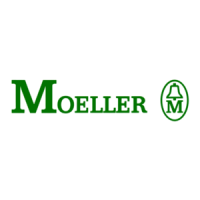Installation
72
05/01 AWB2700-1384GB
Cable Routing Outside Buildings:
Routing outside buildings should be carried out using metal cable
ducts. Where the cable ducts meet, they are to be galvanically
joined and the cable ducts have to be grounded
Lightning Protection
Cables must be routed in double-grounded metal pipes or
reinforced concrete cable ducts.
Signal lines must be protected against overvoltage by voltage
dependant resistors or inert-gas filled overvoltage arresters.
Voltage dependant resistors and overvoltage arresters must be
installed where the cable enters the building.
Transmission Cable
Characteristics of transmission cable:
The connection of subscribers with one and another in the bus
system is made by field bus lines (according to specification RS 485
and DIN 19258 Part 1). Cables must have the following electrical
characteristic:
Parameter Cable A DIN 19245 Part 3
Wave impedance: 135 to 165 Ω (3 bis 20 MHz)
Distributed capacitance: < 30 nF/km
Loop resistance: < 110 Ω/km
Conductor diameter: < 0,64 mm
Conductor cross-section: > 0,34 mm
2
The importance of obeying these parameters is more significant the
higher the baud rate, the number of subscribers and the longer the
cable length is. The shield is used to improve EMC
h
When routing cables outside of buildings, all the valid guidelines
of internal and external lightning protection and grounding have
to be considered.

